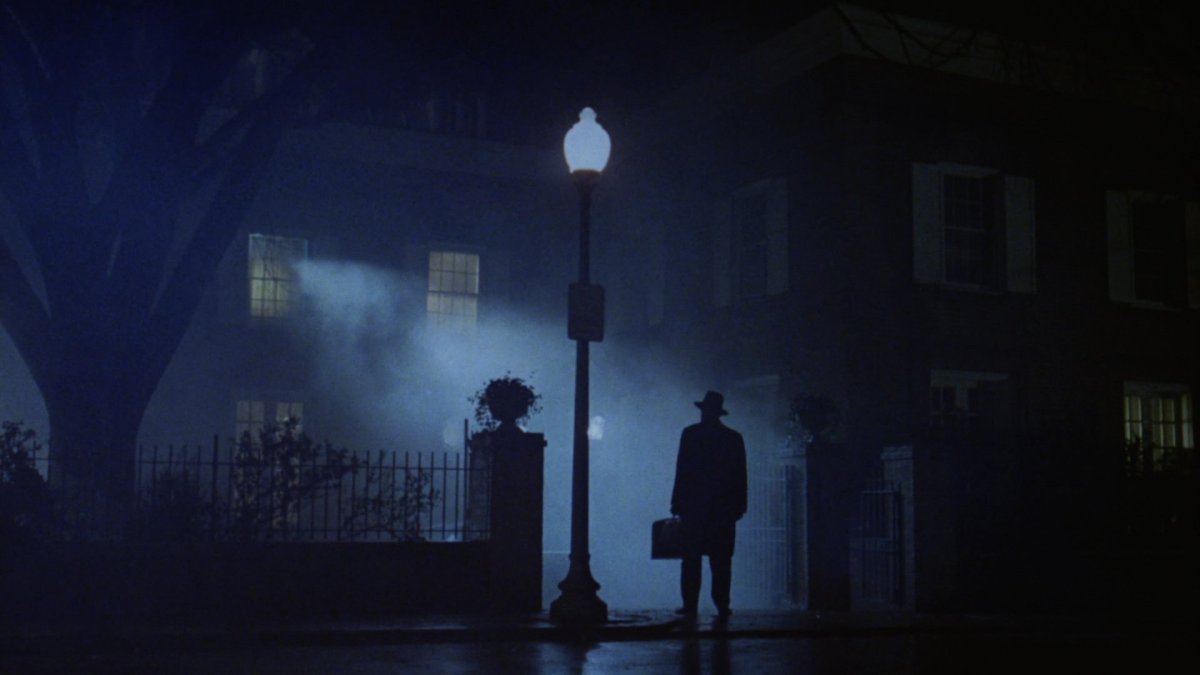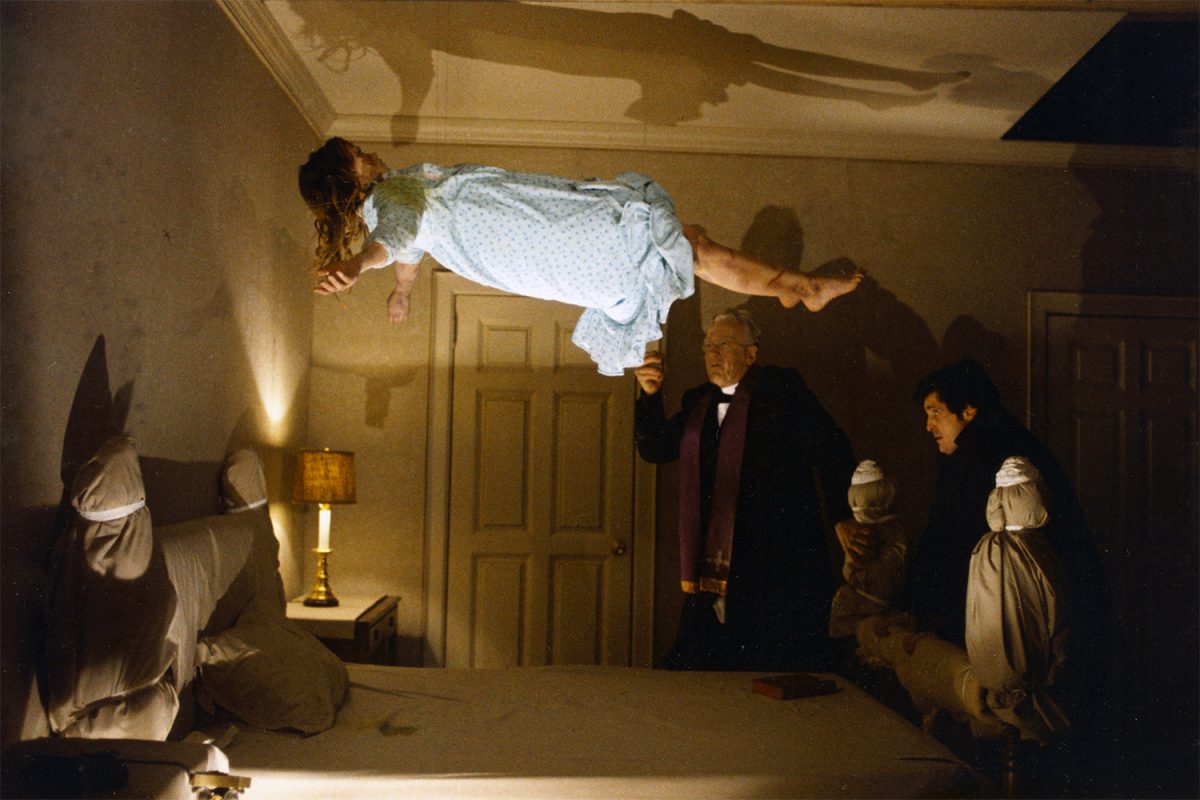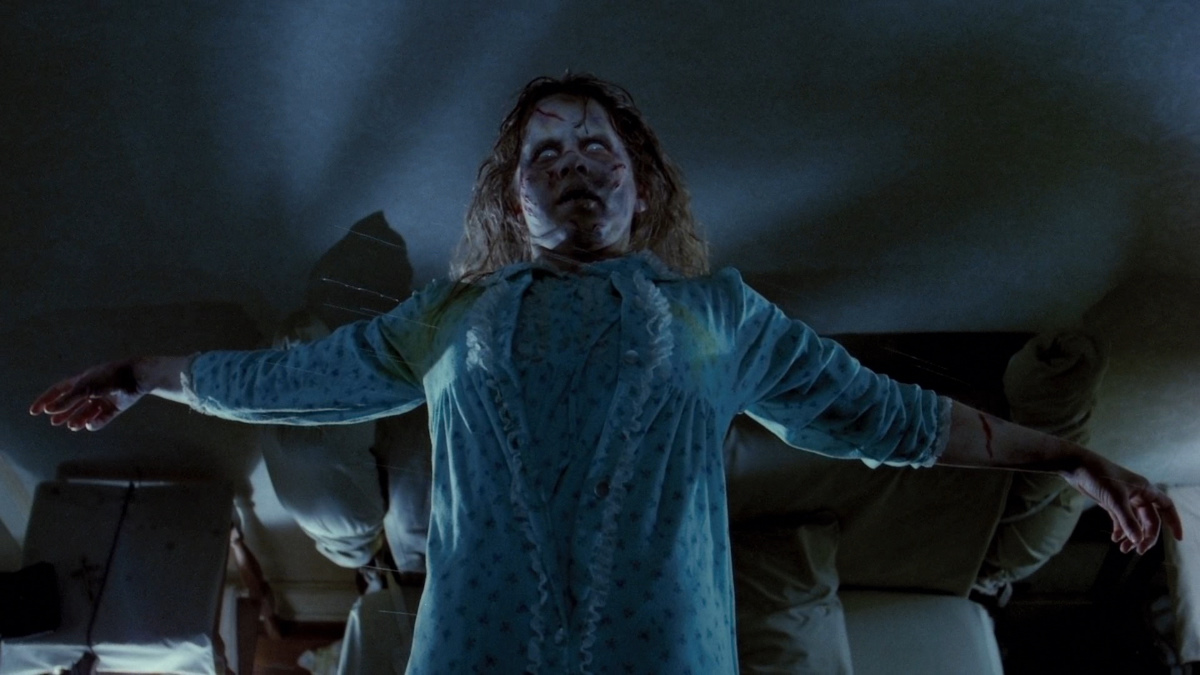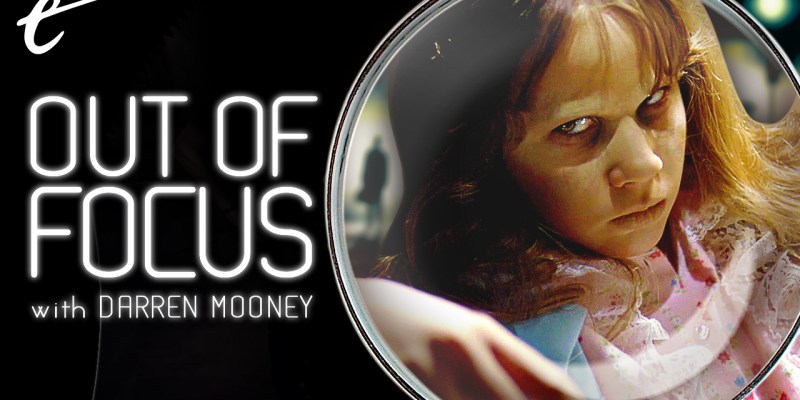William Friedkin’s The Exorcist remains one of the best horror movies ever made. It is also a film indelibly of its moment — a perfect snapshot of the simmering anxieties of early 1970s America.
In terms of subgenre, The Exorcist belongs to a long lineage of supernatural and demonic movies. In the broadest possible terms, it evokes contemporary movies like Roman Polanski’s Rosemary’s Baby or Ken Russell’s The Devils. One could even tie it back to British horrors like Jacques Tourneur’s Night of the Demon or Terence Fisher’s The Devil’s Bride. In that sense, it is a traditional horror; it came out the year before proto-slashers The Texas Chain Saw Massacre and Black Christmas.
However, part of Friedkin’s genius with The Exorcist was rooting this horror in a grounded setting. Friedkin was a key figure in the “New Hollywood” movement, which represented a clear break from the old-fashioned studio system. Young and upcoming directors were able to construct grittier and more grounded takes on familiar genres that spoke to contemporary audiences. What Friedkin did with demonic horror in The Exorcist, Francis Ford Coppola did to the classic mob movie in The Godfather.
The movie begins with an extended atmospheric prologue following Father Lankester Merrin (Max von Sydow) at an archeological dig in Northern Iraq. This feels like the opening of a more conventional genre picture. However, The Exorcist then pivots sharply. It cuts to Georgetown in Washington, D.C. It becomes the story of Chris MacNeil (Ellen Burstyn), an actress and single mother trying to raise her daughter Regan (Linda Blair).
Regan strikes up a relationship with a strange entity named “Captain Howdy.” This mysterious force communicates with the teenager through a Ouija board, and seems to know a lot more than it should. Chris starts hearing strange noises around the house. Regan’s personality begins to shift; she experiences strange seizures, she lashes out, she seems tormented. Chris seeks answers in science, but there’s no medical explanation forthcoming.
One night, while babysitting Regan for Chris, the director Burke Dennings (Jack MacGowran) disappears from her bedroom. His body is found at the bottom of a set of stone stairs outside the house, his neck broken. This draws the attention of Lieutenant William F. Kinderman (Lee J. Cobb). Panicking, Chris consults Father Damien Karras (Jason Miller). The pair come to believe that Regan may be possessed by a monstrous demonic force.

Strip the more heightened supernatural elements out of the plot synopsis and The Exorcist remains a compelling social drama. It is the story of a mother dealing with a dramatic change in her daughter. “Look, Doc, I really don’t understand how her whole personality could change,” Chris complains to Dr. Barringer (Peter Masterson). Barringer replies that it could just be a lesion on the temporal lobe. It is “very common” and can lead to “destructive, even criminal, behavior.”
This feels like only a slight exaggeration of how some parents react to children entering their teenage years. However, it feels particularly charged in the context of The Exorcist. Both the film and novel feel like a reckoning with the legacy of the 1960s. Chris is filming a movie about the decade’s campus protests. More broadly, the 1960s had been defined by a generational trauma, as parents worried about their kids partaking in the “youth rebellion,” embracing counterculture, or even joining cults.
The Exorcist is also obviously a reaction against the sexual revolution of that earlier decade. One of its most shocking scenes finds Regan masturbating with a crucifix, screaming “Let Jesus fuck you.” Later on, the demon teases Karras, “Your mother sucks cocks in hell.” Even setting aside the demonic possession, there’s the unarticulated question about what Burke Dennings was doing in Regan’s bedroom before he was thrown from her window. There’s also some debate about Karras’ sexuality, which perhaps makes sense in the larger context of Friedkin’s career.
In this sense, The Exorcist is a profoundly conservative work, like a lot of exorcism movies. William Peter Blatty, who wrote the novel and the screenplay, is quite candid about this. “It’s an argument for God,” he has acknowledged. “I intended it to be an apostolic work, to help people in their faith.” It feels somewhat pointed that the demonic force manages to gain entry to a household headed by a divorced single working mother, tapping into many of the anxieties of the time.
This conservatism was a reaction against broader cultural trends. The Exorcist was released in December 1973, at the end of a busy year. The Supreme Court had decided Roe v. Wade that January, decriminalizing abortion nationwide. On television that February, the PBS docuseries An American Family ended up covering the dissolution of the Loud family, with Pat Loud seeking a divorce from her husband after 21 years. In August, the National Organization for Women protested Wall Street.

Even outside of these feminist advances, America was working through some very dramatic changes. Although the resonance is entirely coincidental, there is something evocative about Father Merrin unearthing an ancient and buried evil in the Middle East that comes to torment the United States in a movie released in the midst of the Arab oil embargo. It also feels pointed that The Exorcist presents evil taking root in Washington, just as the nation was working through the Watergate Scandal.
More broadly, The Exorcist is about anomie. As Karras wanders through Washington, the city seems to be collapsing into itself. Kids dance on car hoods in a rundown neighborhood. A homeless man (Vincent Russell) begs for change on the subway platform. “Can you help an old altar boy?” the stranger implores. Ultimately, Karras can’t. It seems that nobody can. Friedkin shoots these relatively mundane scenes of urban decay as if the city itself has become possessed and degraded like Regan.
The sound mix on The Exorcist is incredible. Friedkin uses silence sparingly, and to great effect. There is always something happening, some activity unfolding. The noise is often industrial in nature. Even in Northern Iraq, Father Merrin listens to the clang of the anvil as ironsmiths beat metal into useful shapes. At one point, a horse and cart nearly knocks him down, its driver and occupant too busy getting where they are going to pay attention. It screeches like the Washington subway.
“At one level, The Exorcist appears to be arguing that the modern world, like Sodom and Gomorrah, has sold itself to the devil,” Barbara Creed wrote, “hence, the moral climate is so corrupt that the devil is able to take possession of the young with the greatest of ease. Life in the modern city is marked by a sense of decay associated with poverty, overcrowding, alienation, loneliness, neglect of the old, divorce, alcoholism and violence.” It is a film that is firmly rooted in its particular moment.
In some ways, The Exorcist could only really exist in December 1973. That is the only context in which it truly makes sense. It is a film terrified of encroaching modernity, but a very particular sort of modernity. The Exorcist is a snapshot of a particular set of American anxieties. While its underlying themes are universal, its frame of reference is very specific. This may explain why the original stands as a towering and singular accomplishment, hitting the pop culture like a lightning bolt.

The Exorcist has spawned a variety of sequels. Indeed, there are multiple versions of the third (Exorcist III and Legion) and fourth (Exorcist: The Beginning and Dominion: Prequel to the Exorcist) films in the series, not to mention an alternate cut of Exorcist II: The Heretic. However, these sequels have made no tangible impact on pop culture. They don’t even register in the same way as the schlocky later sequels in the Friday the 13th, Halloween, and Nightmare on Elm Street franchises.
This might be because there’s nowhere for these movies to go. The sequels go wrong immediately. John Boorman’s The Heretic is a fascinating misfire because it feels like a complete rejection of everything that made Friedkin’s original such a masterpiece. It feels like a throwback, with a very old-fashioned central performance from Richard Burton and a lot of studio and model work. It rejects any sense of a specific time or place, moving away from the grounding of the horror in the mundane.
Many of these sequels focus on Father Merrick’s time in Africa, a uniting thread of The Heretic, The Beginning, and Dominion. Even setting aside that each of those films has their own issues, this choice has an alienating effect. It exoticizes the horror for the American audience by moving it overseas. The choice to present The Beginning and Dominion as prequels further distances the franchise from the original’s engagement with its specific moment.
This may be why Exorcist III (and Legion) remains the most successful of the Exorcist sequels. Directed by Blatty, the film is still defined by the 1970s. It stars Hollywood legend George C. Scott as Kinderman, several decades removed from the peak of his career. Brad Dourif plays “the Gemini Killer,” an obvious allusion to the Zodiac Killer of the late 1960s. Still, Exorcist III is at least firmly rooted in Georgetown and engages with those familiar themes about urban decay and corruption.
This is perhaps the challenge in seeking to build a long-delayed sequel to The Exorcist, as director David Gordon Green is attempting to do with The Exorcist: Believer. The beauty of The Exorcist lay in taking a very traditional and even old-fashioned horror template and applying it in a thoroughly modern context. Any worthy successor to The Exorcist needs to be willing to do the same thing in the context of its own moment, without feeling nostalgically beholden to a 50-year-old film.
